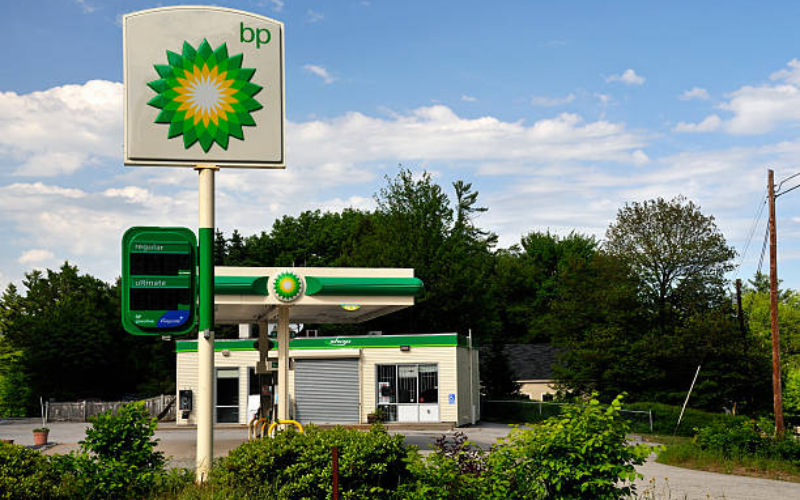BP, one of the world’s largest oil and gas companies, has been experiencing significant growth in recent years. This growth has far-reaching implications, not only for the gasoline industry but also for climate goals. In this article, we will delve into BP’s growth strategy and examine its impact on the gasoline industry and efforts to combat climate change. We will also explore BP’s initiatives towards achieving climate goals, the future of gasoline in light of this growth, the role of alternative fuels in reducing emissions, the importance of consumer choices, and government regulations and policies in relation to BP’s growth and climate goals.
Overview of BP’s Growth Strategy
BP’s growth strategy is centered around increasing production and expanding its global footprint. The company aims to capitalize on new and existing oil and gas reserves, invest in new technologies, and pursue strategic partnerships. This strategy has led to a steady increase in BP’s production capacity and market share.
The Relationship between BP’s Growth and the Gasoline Industry
As one of the leading players in the oil and gas industry, BP’s growth has a direct impact on the gasoline sector. The company’s increased production results in a larger supply of gasoline in the market, potentially leading to lower prices for consumers. Additionally, BP’s expansion efforts can influence competition within the industry, affecting other gasoline producers and distributors.
The Impact of BP’s Growth on Climate Goals
While BP’s growth may have positive implications for the gasoline industry, it also poses challenges for climate goals. The burning of gasoline is a significant contributor to greenhouse gas emissions, which are responsible for climate change. As BP expands its operations and increases production, it contributes to the overall carbon footprint of the oil and gas industry.
BP’s Initiatives towards Achieving Climate Goals
Recognizing the urgent need to address climate change, BP has taken steps to mitigate its impact on the environment. The company has committed to reducing its greenhouse gas emissions and investing in renewable energy sources. BP is actively exploring cleaner technologies, such as carbon capture and storage, to minimize the carbon footprint associated with its operations.
The Future of Gasoline in Light of BP’s Growth and Climate Goals
BP’s growth and climate goals raise questions about the future of gasoline. While gasoline will continue to play a significant role in the transportation sector in the near future, there is a growing need to transition towards cleaner alternatives. Electric vehicles, biofuels, and hydrogen fuel cells are emerging as viable options to reduce emissions and dependence on gasoline.
Alternative Fuels and their Role in Reducing Emissions
Alternative fuels are gaining traction as potential solutions to reduce emissions and combat climate change. Electric vehicles, powered by electricity generated from renewable sources, offer a promising way to reduce reliance on gasoline. Biofuels, derived from organic matter, present a renewable and low-carbon alternative to traditional gasoline. Hydrogen fuel cells, which produce electricity through a chemical reaction between hydrogen and oxygen, are another clean energy option.
The Importance of Consumer Choices in Achieving Climate Goals
Consumer choices play a crucial role in achieving climate goals. As individuals, we can make a difference by opting for more sustainable transportation options. Choosing electric or hybrid vehicles, using public transportation, or carpooling can significantly reduce our reliance on gasoline. Additionally, adopting energy-efficient practices at home and supporting companies that prioritize environmental sustainability can make a positive impact.
Government Regulations and Policies in Relation to BP’s Growth and Climate Goals
Government regulations and policies play a vital role in shaping the trajectory of BP’s growth and its impact on climate goals. Governments can incentivize the adoption of cleaner technologies and impose stricter emissions standards. They can also support research and development efforts in alternative fuels and renewable energy sources. Collaborative efforts between governments, industries, and consumers are crucial to achieving a sustainable future.
Conclusion
BP’s growth has far-reaching implications for the gasoline industry and efforts to combat climate change. As the company expands, it is essential for BP to prioritize sustainability and invest in cleaner technologies. Additionally, consumers and governments must actively support the transition to alternative fuels and adopt environmentally conscious practices. By working together, we can create a future where growth and climate goals can coexist harmoniously, ensuring a sustainable and cleaner world for generations to come.
CTA: Join the movement towards a sustainable future by making informed choices, supporting renewable energy initiatives, and advocating for environmentally friendly policies. Together, we can make a difference in achieving our climate goals.




